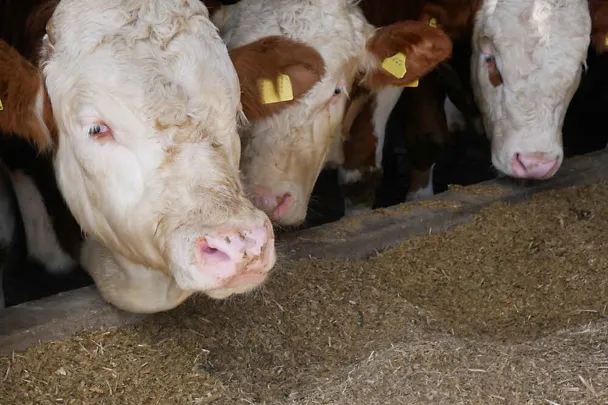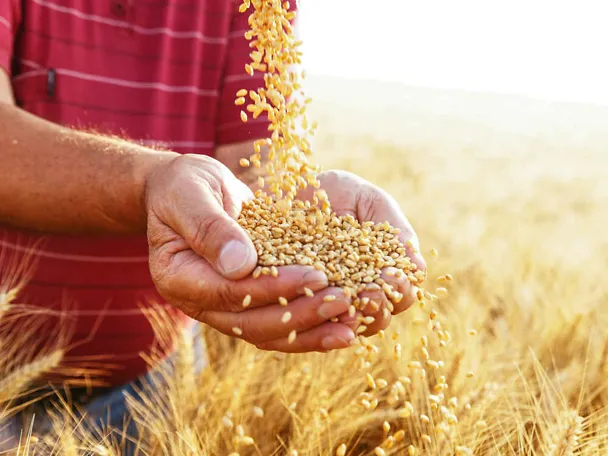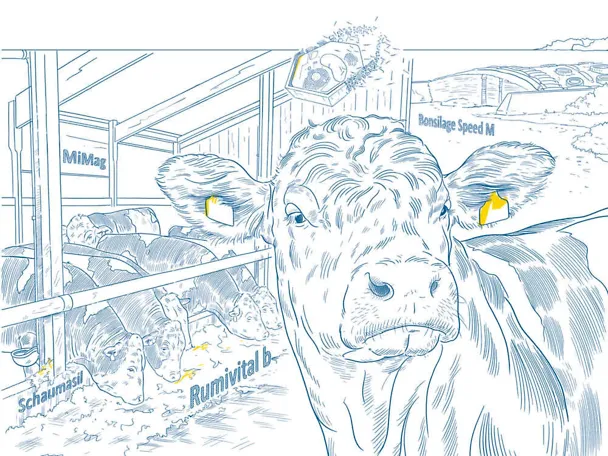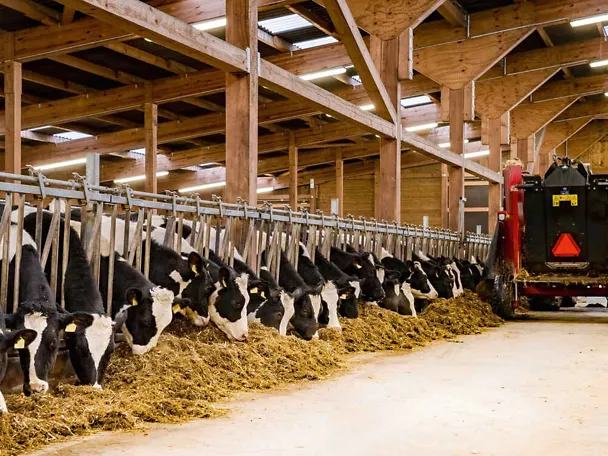No chance for mould – healthy feed for healthy bulls

In order to achieve a high final weight and good feed conversion in bull fattening, it is necessary to use feed that is free from defects. Mould in feed can lead to increased feed losses and the formation of mycotoxins. These toxins place a considerable strain on the liver metabolism of fattening bulls and limit daily weight gains.
Different types of mycotoxins
The term mycotoxins refers to toxins produced by various fungi. They occur in basic feedstuffs as well as in concentrated feed. A general distinction can be made between field fungi and storage fungi. Among the mycotoxins produced by field fungi, deoxynivalenol (DON), zearalenone (ZEA) and ergot are by far the best known and most widespread types. Storage fungi include various penicillins and aspergillus fungi. One of the best-known mycotoxins formed by storage fungi is aflatoxin (see Fig. 1).
Preventing mycotoxins in feed
Prophylactic measures are particularly important in order to keep mycotoxin contamination and the associated health and performance problems to a minimum. These measures begin with seedbed preparation and extend to the appropriate use of plant protection products, right through to harvesting and storage.
When storing grain, the use of a preservative acid is recommended. Preservative acids such as SCHAUMASIL 5.0, SCHAUMASIL EXTRA or SCHAUMASIL SUPRA NK inhibit the microbial growth of fungi, yeasts and bacteria (see Fig. 2). When used in the correct quantities, they kill storage fungi and prevent further proliferation.
During ensiling, it is important to ensure optimal ensiling management: for example, a short silo filling time, good compaction through appropriate chop lengths, rapid pH reduction through the use of ensiling agents and an optimal airtight seal after closing the silo.
Binding toxins in feed
Despite comprehensive preventive measures, mould contamination can occur in feed. As a general rule, heavily contaminated feed should not be fed to animals. Limit and guideline values are specified for individual mycotoxins (see Fig. 1). To provide the best possible support for feeders and bulls, the use of a toxin binder is recommended. SCHAUMASAN BASIS, with a special combination of three toxin binders, takes into account the different properties of the various mycotoxins with their specific binding affinities, protects the metabolism and liver from increased stress and ensures performance even in stressful situations. This special product can be used as a top dressing in all types of rations.



